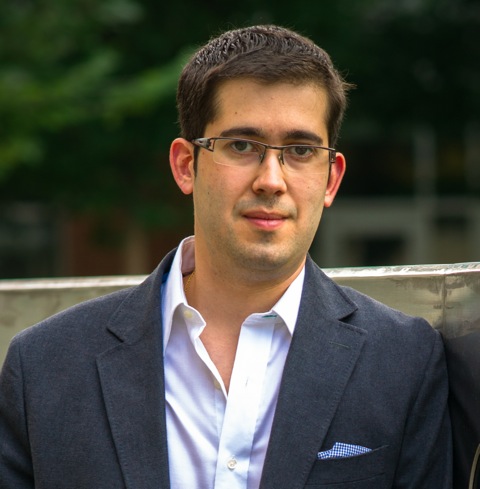
The CSE Colloquium Series will present Josep Miquel Jornet, a faculty candidate, on February 28 at 4 p.m. in 115 Avery. He will speak about his research on "Enabling Nanoscale Machine Communication in the Terahertz Band". The talk will be preceded by a reception at 3:30 p.m. in 348 Avery.
Abstract
Nanotechnology is providing new tools to the engineering community to design novel machines just a few hundred nanometers in size, which are able to perform only very simple tasks. Nanonetworks, i.e., networks of nanomachines, will enable a plethora of applications in the biomedical, environmen- tal, industrial and military fields. To date, it is still not clear how nanomachines will communicate. The miniaturization of a classical antenna to meet the size requirements of nanomachines would impose the use of very high radiation frequencies and, consequently, heavily impact on the very limited pow- er-budget envisioned for nanomachines. In contrast, novel graphenebased plasmonic nano-antennas are presented in this talk as a promising enabling technology for nanomachine communication. The radiation frequency of these nano-antennas lies in the Terahertz Band, i.e., two orders of magnitude below that of classical antennas of the same size. This talk then focuses on a novel Terahertz Band channel model, which reveals, among other peculiari- ties, a huge available bandwidth within the communication range envisioned for nanomachines. The achievable channel capacity is also investigated accounting for the detrimental effects of molecular absorption in this frequency range. In addition, novel pulse-based modulations, tailored to the Tera- hertz Band channel peculiarities and the capabilities of nanomachines, are detailed. The results show that the Terahertz Band enables ultra-broadband communication in very high node-density nanonetworks. Finally, novel coding schemes, energy models and protocols for ultra-broadband communca- tion in nanonetworks are overviewed. While there is a long way to go before having functional nanonetworks, communication-focused investigations and hardware-oriented research will benefit from being conducted in parallel from an early stage.
Biography
Jornet received the Engineering Degree in Telecommunications Engineering and the Master of Science in Information and Communication Technologies from the School of Electrical Engineering, Universitat Politècnica de Catalunya (UPC), Barcelona, Spain, in 2008. From September 2007 to December 2008, he was a visiting researcher at the Massachusetts Institute of Technology, Cambridge, under the MIT Sea Grant program. Currently, he is a Ph.D. candidate and graduate research assistant under the supervision of Prof. Ian F. Akyildiz at the Broadband Wireless Networking Laboratory (BWN Lab), School of Electrical and Computer Engineering, Georgia Institute of Technology, Atlanta, with a fellowship from “la Caixa” (2009-2010) and Fundación Caja Madrid (2011-2012). He is a student member of IEEE and ACM. His current research interests are in electromagnetic nanonetworks, graphene-enabled wireless communication, Terahertz Band communication networks and the Internet of Nano-Things.